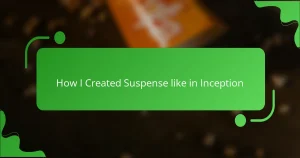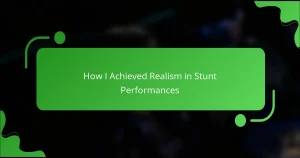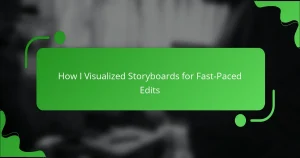Key takeaways
- Color grading enhances visual storytelling, mood, and emotional impact in films, as exemplified in “John Wick.”
- Contrasting color palettes, such as deep blues and warm reds, create intense visual experiences and evoke strong emotional responses.
- Action short films utilize rapid color shifts to convey character emotions and narratives effectively within a limited timeframe.
- Personal challenges in color grading highlight the importance of balance and restraint in achieving the desired atmosphere and emotional weight.
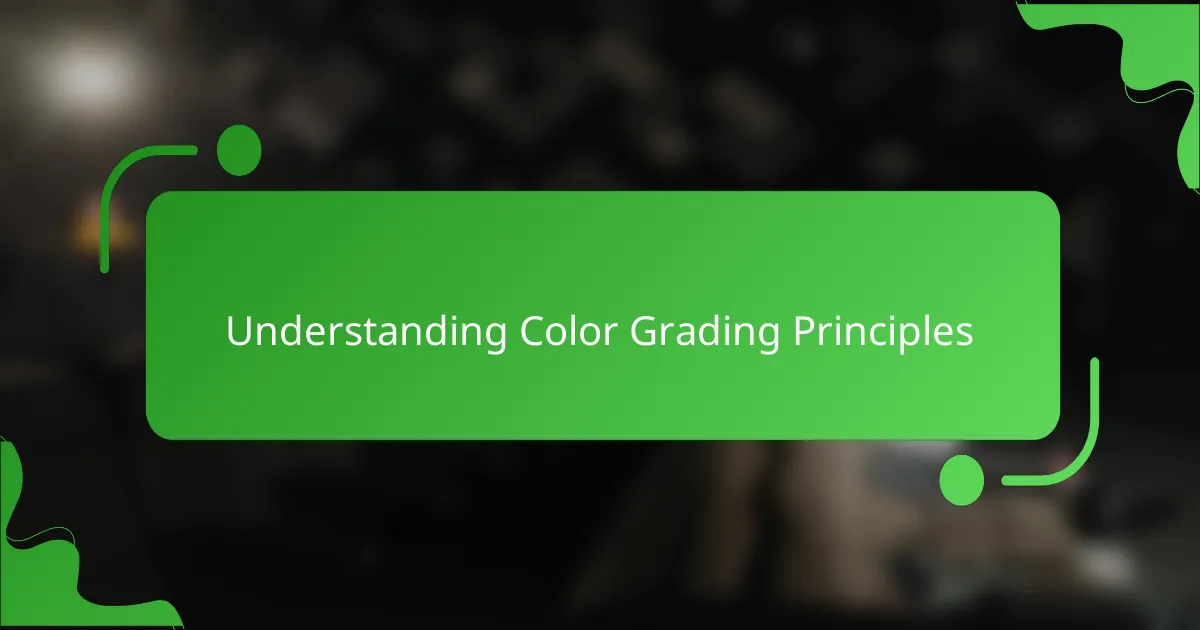
Understanding Color Grading Principles
Color grading is an essential aspect of filmmaking that can dramatically alter the viewer’s perception and experience. In “John Wick,” the filmmakers expertly used color grading to set the mood and enhance the intense action sequences. I remember being captivated by the striking contrasts between the cool blues of the nightclub scenes and the warm hues during the daylight sequences, creating a dynamic emotional landscape.
In my experience, color grading isn’t just about aesthetic pleasure; it’s about storytelling. For instance, the deep reds during the combat scenes not only heighten the intensity but also evoke a strong emotional response, pulling viewers deeper into John Wick’s world of vengeance. This intentional approach to color creates a visual coherence that keeps the audience engaged throughout.
Here’s a simple comparison of key color grading techniques used in action films like “John Wick” versus general filmmaking practices:
| Aspect | Action Films |
|---|---|
| Color Palette | High contrast, vivid colors to enhance action |
| Emotional Tone | Intense, dramatic |
| Focus | Character mood and tension |
| Lighting | Dynamic, often stark contrasts |
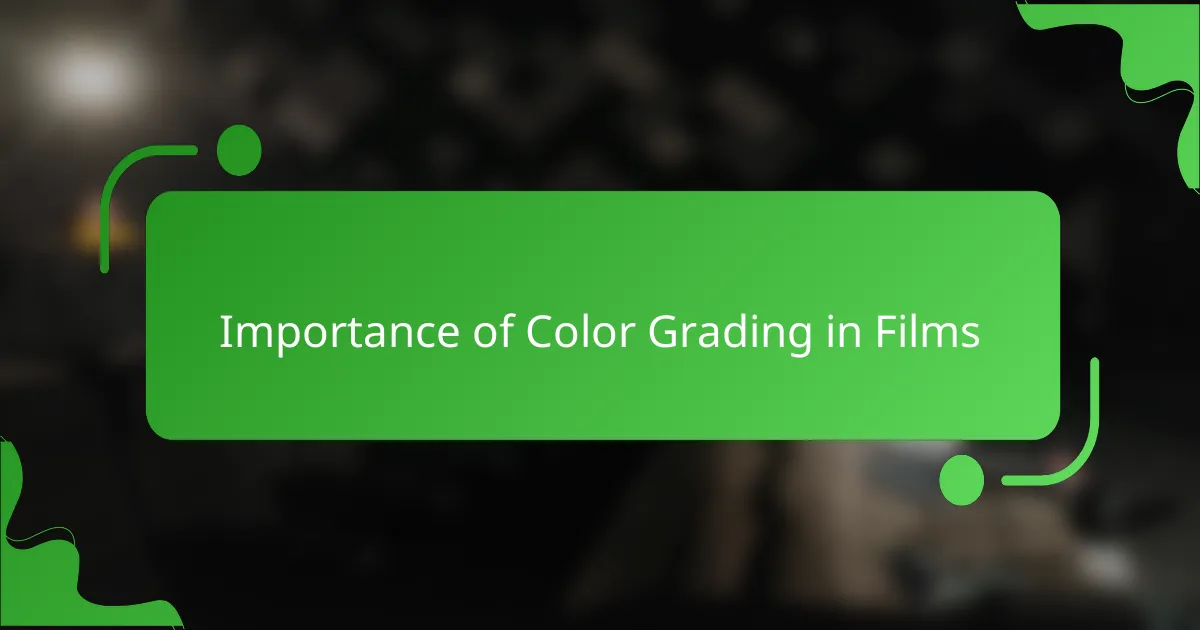
Importance of Color Grading in Films
Color grading is essential in films, as it enhances the visual storytelling and sets the mood for the audience. I remember watching the tactical sequences in “John Wick.” The way they used rich greens and deep blues made me feel the tension and urgency, almost as if I were right there with the characters. It’s remarkable how a simple change in hue can intensify the emotional weight of a scene.
Moreover, color grading contributes to the film’s overall aesthetic, providing a cohesive look that supports the narrative. For instance, vibrant reds during fight scenes often signified danger or action, creating a visceral reaction that kept me on the edge of my seat. It’s fascinating to see how these choices guide audience perception and immerse us deeper into the story.
- Establishes mood and atmosphere
- Guides viewer emotions through color choices
- Enhances the storytelling aspect of the film
- Creates visual coherence across scenes
- Influences the perception of time and space
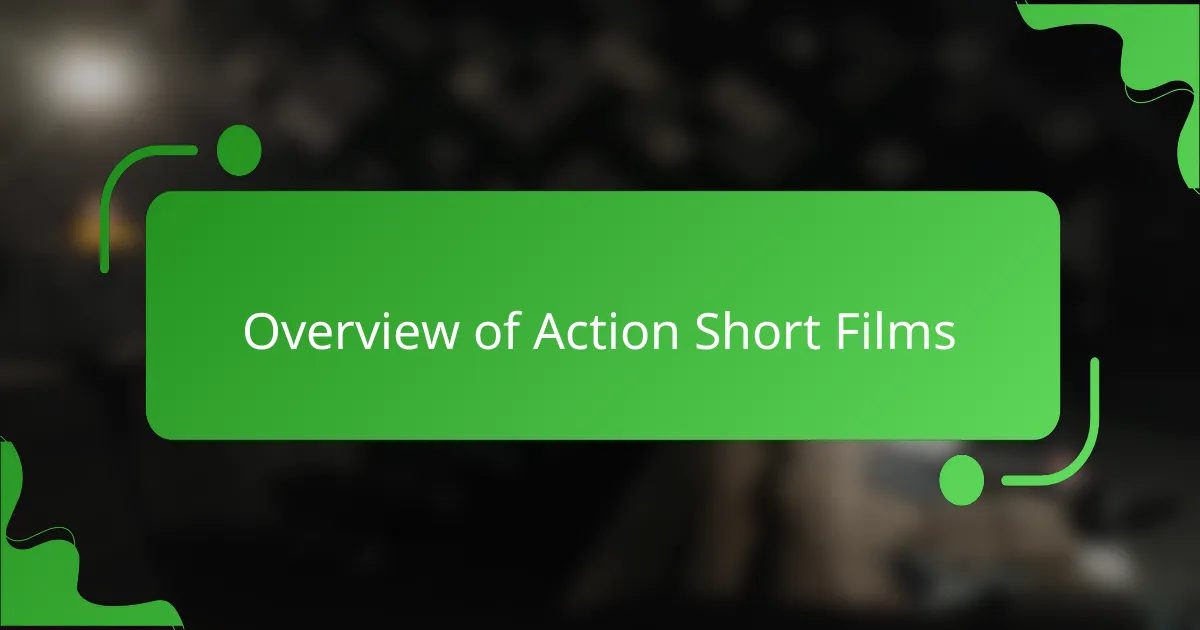
Overview of Action Short Films
Action short films offer a thrilling burst of adrenaline in a compact format. From the explosive choreography to the rapid storytelling, they captivate audiences who crave excitement and intensity. I’ve often found myself glued to the screen, wondering how creators can pack so much into just a few minutes. The artistry in these films, including the clever use of color grading, is not to be overlooked.
What I find particularly fascinating is how action short films leverage their brief runtime to deliver punchy narratives and striking visuals. I remember watching a short film that utilized rapid color shifts to reflect the protagonist’s emotional arc—each color meant something specific, from the stark greys of despair to the fiery oranges of triumph. It’s incredible how filmmakers can convey such depth in a matter of only a few minutes.
In my experience, the marriage of action and dynamic visuals is what makes these films compelling. Just think about it: a well-timed color transition during a pivotal fight sequence can elevate the action but also enhance the storytelling. It makes you reflect on the choices made by the filmmakers, sparking discussions long after the credits roll.
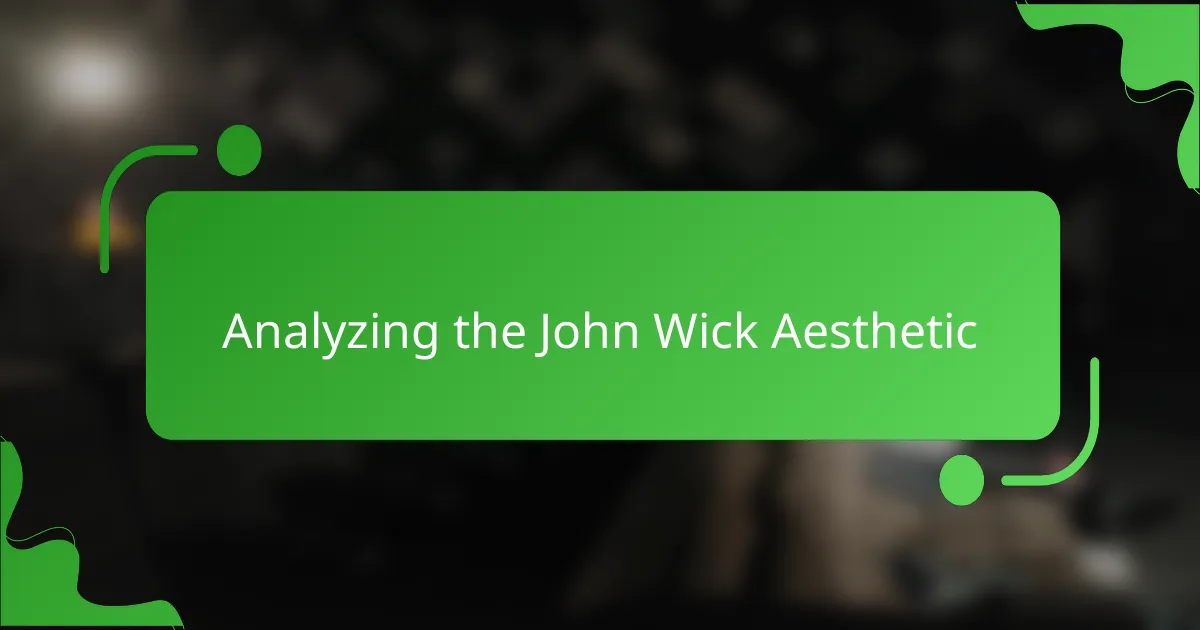
Analyzing the John Wick Aesthetic
The aesthetic of “John Wick” captivates audiences with its striking visuals and meticulously crafted scenes. I find that the rich color palette—dominated by deep blues and warm reds—creates a mood that is both intense and immersive. My first experience watching the film left me in awe of how the lighting and color enhanced each action sequence, making them feel not just thrilling but also artistically compelling.
In terms of emotional impact, the use of shadows contrasted against vibrant colors often evokes a sense of urgency and despair, perfectly matching the protagonist’s journey. I remember feeling my heart race during pivotal moments due to the way these colors played into the narrative, amplifying the tension and emotional stakes of each scene.
Here’s a table comparing color grading techniques used in “John Wick” with other action films:
| Aspect | John Wick | Other Action Films |
|---|---|---|
| Color Palette | Deep Blues, Warm Reds | Traditional Bright Colors |
| Lighting | High Contrast with Shadows | Even Lighting |
| Emotional Tone | Intense, Gritty | Varied, Often Less Cohesive |
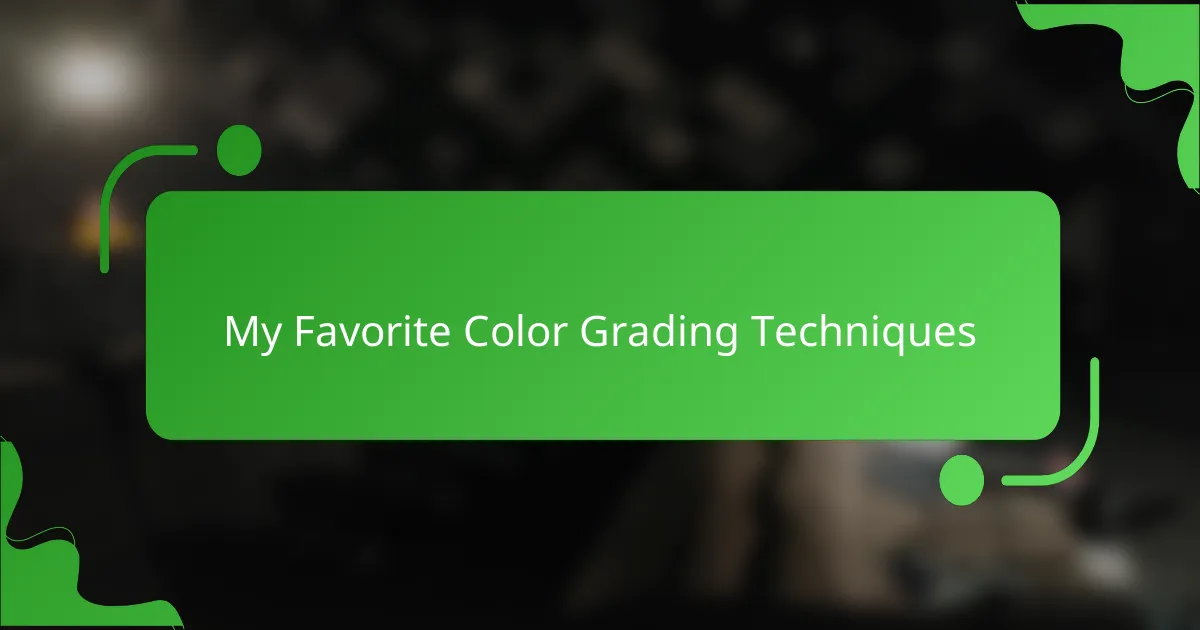
My Favorite Color Grading Techniques
One of the standout techniques that I admire in “John Wick” is the use of contrasting colors, particularly the blend of cool blues and warm golds. This contrast not only sharpens the visuals but also heightens the emotional stakes in key scenes. I remember the first time I saw the neon-lit fight scenes; they felt almost like a dance, with each frame wrapped in artistry that mirrored the intensity of the action.
A few specific color grading techniques truly elevate the film’s visual storytelling:
- Cooler Tones for Intense Moments: The use of blue shades in somber scenes amplifies tension and conflict.
- Warm Highlights During Action: Gold and orange hues create a sense of urgency and excitement during fight sequences.
- Desaturated Backgrounds: This technique draws focus on characters and their emotional states, allowing us to engage more deeply with their journeys.
- Neon Accents: Bright colors serve as visual punctuation, underscoring moments of drama or highlight in a scene.
- Mood Establishment through Color Palettes: Each setting uses specific color schemes to evoke the right emotions, making the environment an active participant in the story.
Color grading in “John Wick” really transformed my perspective on how crucial visual tone is in action storytelling. It made me appreciate the power of color as a narrative tool, encouraging me to explore similar techniques in my own short films.
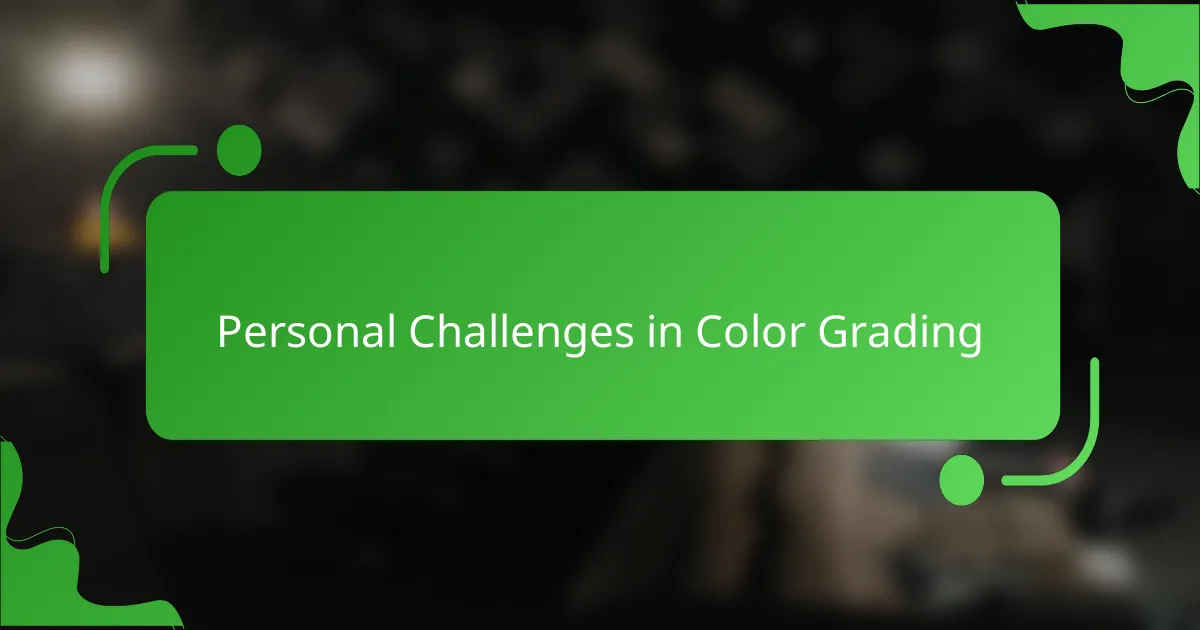
Personal Challenges in Color Grading
Color grading can often feel like walking a tightrope. I remember sitting down to grade some footage that I shot, feeling overwhelmed by the sheer volume of choices. I struggled to find the right balance between mood and clarity. It made me realize how even minor tweaks can drastically change the emotional weight of a scene, echoing my experiences while working on projects similar to “John Wick.”
Sometimes the technical aspects can feel daunting. When I first experimented with creating a gritty look using shadows, I often found myself going too far—making scenes appear washed out rather than stylized. That journey taught me the importance of restraint and knowing when a touch of color is all that’s needed to evoke the right atmosphere. Have you ever felt the weight of a single adjustment, and how it can make or break the intended impact of a moment?
One particularly challenging aspect was trusting my instincts. I vividly recall battling indecision over whether to amplify the reds in a climactic sequence or stick with a desaturated tone to convey hopelessness. It feels so personal, doesn’t it? That hesitation reminded me of scenes in “John Wick” where color choices reflect the turmoil of the characters—it’s a delicate dance where each decision leads the viewer’s experience.
